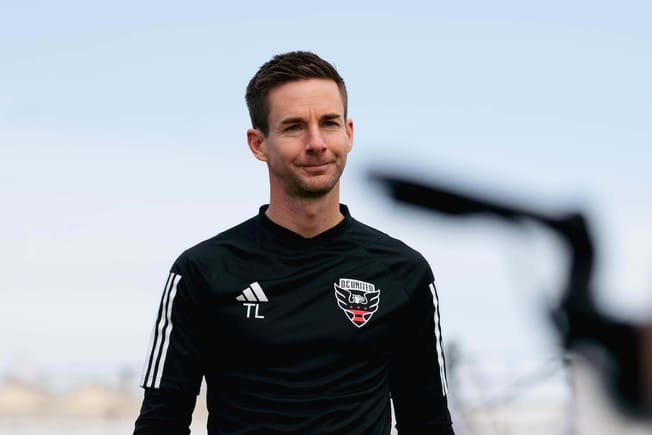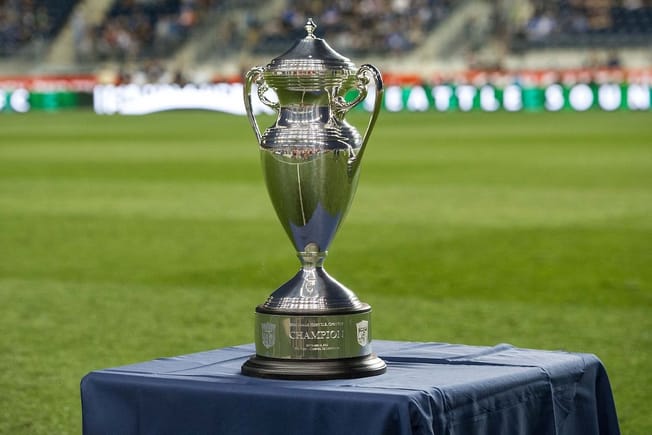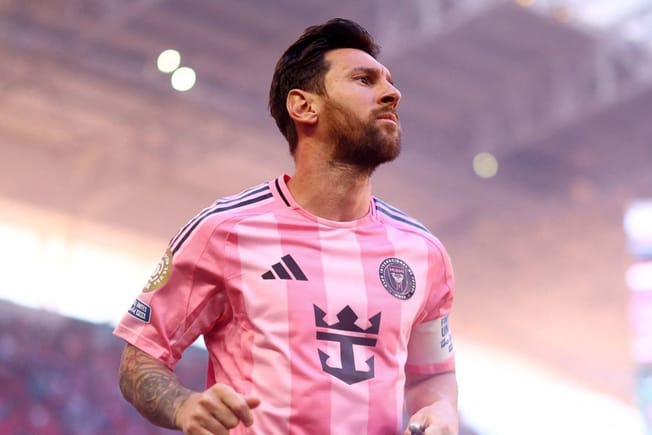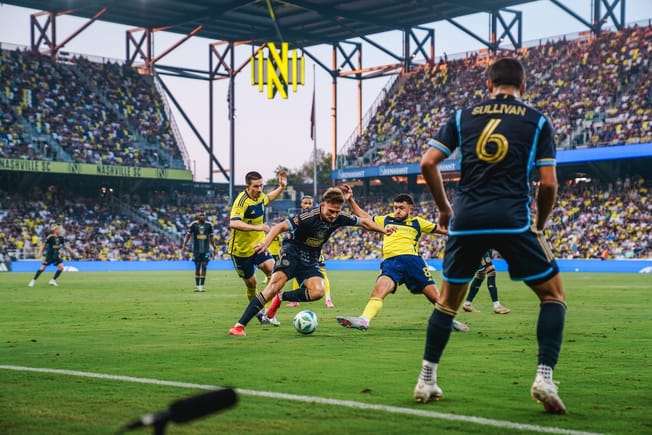Quick Hits
- After winning the Concacaf U-20 Championship with the United States, Paxten Aaronson is playing games again in MLS
- Many know the Aaronson name from Paxten’s older brother Brenden, but the younger Aaronson has plenty of talent
The Paxten Aaronson hype is building.
First, that hype came in whispered terms after his brother, Brenden Aaronson, broke out with the U.S. men’s national team. Then it grew louder as he signed his own first professional contract and made his debut with the Philadelphia Union in May, 2021. After a run with the U.S. at the Concacaf U-20 Championship, it’s still growing. Now back in Philadelphia, Aaronson is trying to establish himself in the Union’s first team to follow the same trajectory that led his brother, Brenden Aaronson, to Europe and the national team.
At the U-20 Championship, Aaronson staked his claim as the best player on the team. Opposing defenses couldn’t cope with his movement or his skill on the ball. When the games became more difficult, the 18-year-old attacker raised his game to match the level: of his seven goals in the tournament, five of them came in the quarterfinals or later. He finished as the leading scorer and won the Golden Ball.
⚽ Goal! 🇺🇸
— Concacaf (@Concacaf) June 29, 2022
Paxten Aaronson's brace gives the @USYNT a 2-0 lead over Costa Rica. | #CU20 pic.twitter.com/VxBxBKMHba
While being the leading scorer for the U.S. at the Concacaf U-20 Championship hasn’t been historically meaningful – the last four leading scorers for the U.S. at that tournament have combined for two senior team caps and zero goals – Aaronson is clearly a talented young player.
Let’s take a look at his skillset to learn more about what makes him tick and what his future might hold.
THE AARONSON COMPARISON
After Brenden Aaronson exploded onto the scene in 2020, lighting up MLS before a move to RB Salzburg and now Leeds United, it was easy to get excited about a younger version of him climbing up the professional soccer ranks. After all, if the “Little Brother” effect is true in other sports, why wouldn’t it be true in soccer?
A 2010 study of 700 pairs of brothers who played Major League Baseball found that younger brothers were 2.5 times as likely as their older brothers to record superior career batting statistics. https://t.co/2ERkBf2OoZ
— FiveThirtyEight (@FiveThirtyEight) December 1, 2020
Of course, as anyone with an older sibling knows, people often fall into the trap of treating siblings like they’re the same person, with the same abilities and weaknesses. It’s tempting to do that with the Aaronson brothers. They look similar, with their shaggy hair and slim builds. They have a similar frenetic approach to the game, which fits in nicely with the way the Philadelphia Union play.
Despite these similarities, at their core, they’re different players.
The difference starts with how they’ve progressed so far in their careers. Here’s a look at how Paxten has performed over the first years of his professional career. This chart is just the sum of Goals Added (G+), a popular possession value metric by American Soccer Analysis, across both MLS and the USL Championship.

Paxten is ahead of where Brenden was at a similar age, which is an encouraging sign. For Brenden, the 2020 season was a breakout year, earning him first place on MLS’s 22 Under 22 list. With a strong end to the 2022 season, Paxten could establish himself as a first team starter and have that same kind of rise in 2023. There’s also the very real possibility that his breakout season could take place in Europe if a team decides to make a move for him.
Looking towards the field, the positional breakdown between the two brothers is different, too. Here’s a visualization of the various positions that Paxten and Brenden have played during their time in MLS and the USL.

Brenden split his time between the wings, the No. 10, and the No. 8 during his time playing in the United States. He even played a game as a center back (according to Stats Perform) back in 2019. We’re not buying that one, but nice try data provider. Paxten, on the other hand, tends to play higher up the field. He’s almost entirely coded either as a striker – really, a second striker when you watch the tape – or as an attacking midfielder.
The younger Aaronson can play multiple roles in possession, but he has a tendency to assert himself in the attack more than his brother.
PAXTEN THE SOCCER PLAYER
If Paxten isn’t just Brenden 2.0, then who is he?
After running his (admittedly limited) MLS numbers through a player matching algorithm, two European comparisons stand out: Leicester City’s Ayoze Perez and Atletico Madrid’s Angel Correa. That’s not to say that Aaronson is as good as these two players, but his style of play is similar to that pair. Paxten’s energy and activity on the defensive end is one of the biggest reasons the comparison fits.
Despite his listed height and weight sitting at a waifish 5’9” and 139 pounds, he shows a complete lack of fear on the defensive end against larger players. As an undersized, but aggressive player, Aaronson fits well into a system that requires pressing through the middle third.
As a ball progressor, Aaronson puts his relatively limited overall involvement to good use. He tends to touch the ball less than most midfielders or forwards, but he plays forward with a large percentage of his passes. The teenager is the most dangerous in the final third and around the box. He consistently moves into open spaces and creates shots either for himself or for his teammates with that movement and his skill on the ball.
I'm really looking forward to seeing more of Paxten Aaronson over the next few months. He doesn't stop pressing and he doesn't stop looking for ways to progress the ball. pic.twitter.com/AqlkkhIWg9
— Joseph Lowery (@joeclowery) July 26, 2022
Aaronson is comfortable playing in tight spaces, but he doesn’t have the pace or acceleration to consistently beat players on the wing. He works better through the middle of the pitch.
Even though Aaronson has some real skills, there are still some deficits in his game that must be ironed out for him to truly shine in MLS and beyond. His overall usage rates are quite low, which means he doesn’t get on the ball very much. A low usage rate is not necessarily an issue, but it might indicate that Aaronson isn’t going to demand the ball and take over a game as a playmaker. Instead, he will find his spots and take advantage of his movement to try to take the final shot or make the penultimate pass in an attacking sequence.
Aaronson is willing to dribble at players one-v-one, but his success rates leave much to be desired and he currently lacks the speed and strength to differentiate himself. That should change over the next year or so as he continues to mature.
LOOKING AHEAD
The rest of the 2022 season could be key for Aaronson’s development.
With the Union on top of the Eastern Conference, minutes have been hard to come by Aaronson: he’s sitting just shy of 400 minutes this year. That said, he has been playing this month. Since rejoining the team after the Concacaf U-20 Championship, Aaronson has played in four straight games. It helps that he’s on a Philadelphia Union team that uses two strikers and a No. 10 and is committed to playing the kids.
The 18-year-old can play any of the three attacking positions in Jim Curtin’s 4-4-2 diamond: as one of the two forwards or as a replacement for Gazdag in the space between the midfield and the strikers. Gazdag doesn’t get many touches either and his game could provide the blueprint for how Aaronson could impact play as an unconventional No. 10. Aaronson’s flexibility in this area is an asset, one that should contribute to increased playing time going forward.
Despite reports of European attention, Aaronson still needs some seasoning before he’ll be truly ready to impact a good team across the Atlantic – and that’s okay. He’s only played around 2,000 MLS minutes in his career.
Regardless of what happens on the transfer front over the next 12 to 18 months, Philadelphia Union and USMNT fans have plenty of reasons to be excited about Paxten Aaronson. His skill on the ball and relentless defensive work could make him a valuable player in a modern soccer landscape that prioritizes both of those attributes over almost anything else.
If Aaronson continues to mature physically and gets more on-field reps, he could develop into quite the player.







Comments